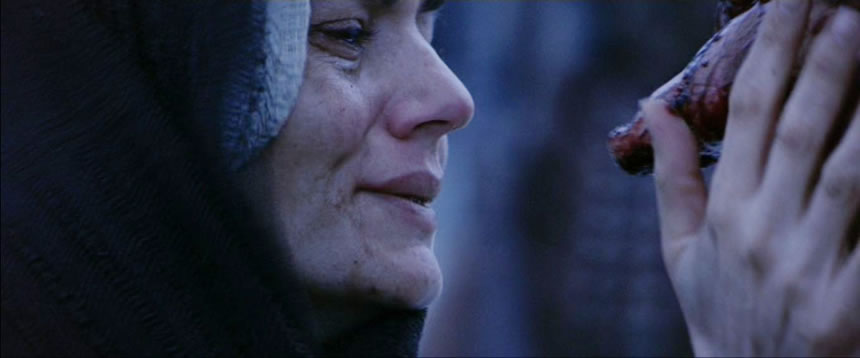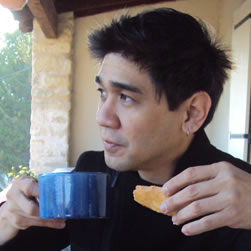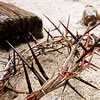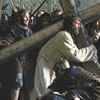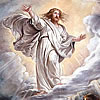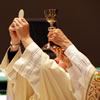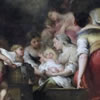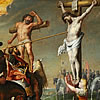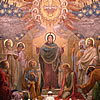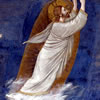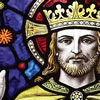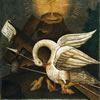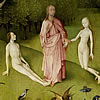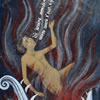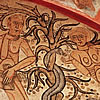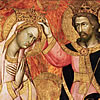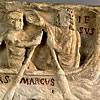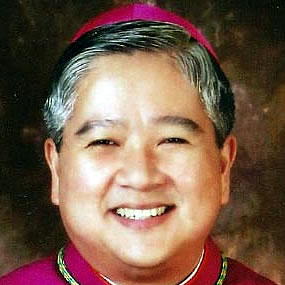Inside The Passion of the Christ - Part 3/3
This is a continuation of a three-part series on the non-Scriptural scenes in the film The Passion of the christ. You may read PART 1 and PART 2 first before continuing.
Suspension of the Cross
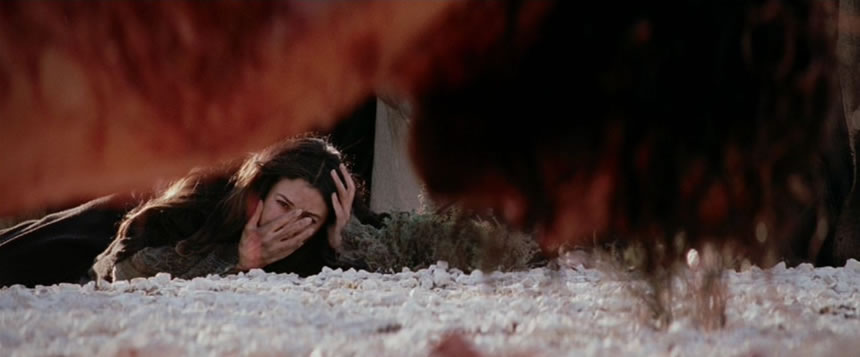
When Jesus was being crucified two things are shown that are not recorded in the Gospels. The first is that soldiers set the nails of the hands too far apart that they pull and dislocate Christ’s shoulder for his hands to reach. Several mystics have indicated this such as Venerable Mary of Agreda, and Blessed Anne Catherine Emmerich. Another mystic, St. Bridget of Sweden, was given prayers by Christ, which were approved by Pope Pius IX in 1862. In those prayers the description given by Christ of his crucifixion was:
Remember the very bitter pain you suffered when the Jews nailed your sacred hands and feet to the cross with big blunt nails, and not finding you in a pitiable enough state to satisfy their rage, they enlarged your wounds and added pain to pain, and with indescribable cruelty stretched your body on the cross, pulled you from all sides, thus dislocating your limbs...
Prayer of St. Bridget of Sweden
During the crucifixion scene, the cross is slowly turned over so that the executioners can bend the nails lest it gets pulled off during the writhing of the victim when the cross is raised. It is a horrific scene because we anticipate that when the cross is turned over, Christ will land with his face on the rocky ground.
But, the vision of Mary of Agreda describes that when the cross made the turn, angels prevented Christ from getting hurt this way. The angels made sure that there was an empty space between Christ and the ground. In the film, this is shown so that the cross was seen as if it were suspended. We don’t see the lower part of the cross so we don’t know if it was caught in between some rocks. The film leaves to the imagination of how something like this might happen. The point, however, is not what the miracle is, but who it was for.
Although Mary of Agreda doesn’t mention anyone seeing this miracle, the film shows Mary of Magdalene noticing it. This comes at an appropriate time because we see her distraught, weeping uncontrollably, as if about to lose hope. We have to remember that Jesus claimed to be the Messiah, and the Jews had very specific ideas of what the Messiah was supposed to do. One of them was to fight their enemies and release them from bondage. So to see Jesus in captivity and about to be put to death didn’t quite fit with the Messiah they envisioned. Christ’s disciples prematurely abandoned him because they lost hope of him being the Messiah – how could he be the Messiah if he was going to die (that and the fear they might be hunted down and be put to death as well.)
So, in the film, this miracle was meant for Mary Magdalene. It was a small miracle for her sake; to give her strength. And we see it in the film: she straightens up with a newly determined countenance. Sure, she is still suffering, but now she suffers with hope. Hope and suffering are not mutually exclusive, and that it the lesson of this scene.
Mary’s Amen
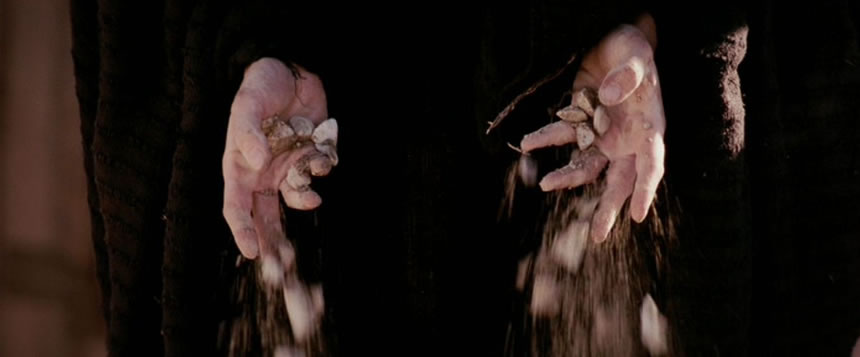
For Catholics, Mary’s participation in the Passion is significant. She wasn’t just someone who witnessed it: she also took part in it. From the story of the Annunciation she conformed to the plan of God and accepted to be the mother of the Messiah through her“do unto me according to your word.” (Luke 1:38) And here, in Calvary beside the dying Christ, her disposition has not changed.
The problem for a very visual medium such as film is to show what is going on inside of her. Maia Morgenstern, who plays Mary, used movement to express this internal attitude. As Christ was being lifted up on the cross, we see her dig her hands into the ground and then stand up (in union with him) clutching gravel and dirt on both hands. It was a way of showing that she was“clutching at straws.”
When the soldiers finally align the cross so it falls into place, the fate of Christ is sealed. There is nothing more but to wait for him to die. It is at this point the camera focuses on her hands that relaxes and releases the earth and grit to the ground. It was a visual way articulating her surrender. It was her“amen" to God’s will.
So even if this is not reflecting Scripture, it is reflecting what Catholics know of Mary’s heart – a total surrender to God.
Mary, our Mother
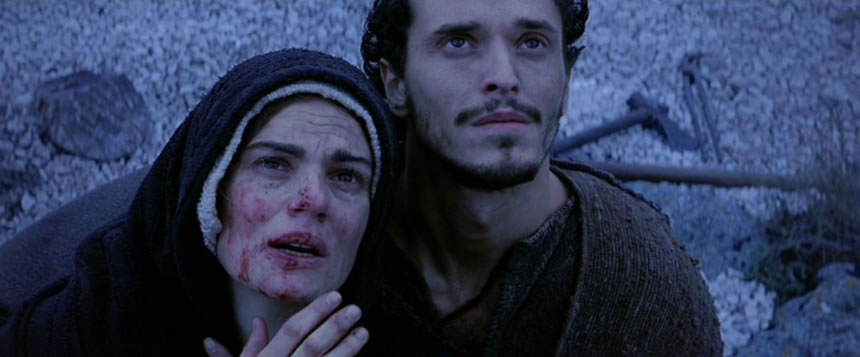
Several times in the film some characters say something that isn’t recorded in the Gospels but is added to prompt and explain what Christ says. One of these is when Mary says:“flesh of my, flesh, bone of my bone, heart of my heart...”
There is some theological background to this. We have to remember the Christ had no biological father that contributed to his DNA. So, technically speaking, Christ’s entire genetic makeup came from Mary. So when she says this line she is quite accurate in a very literal sense for Christ’s flesh is her flesh, his bone is her bone, and his heart is her heart.
And since her son, the one she loves most as a mother, is going to die, she has nothing to live for and asks to die with him:“My son, let me die with you.”
This prompts Jesus to let her know that her mission isn’t complete yet. He gives her to St. John when he says:“Woman, behold your son; [son] behold your mother.” While this can be personal, Catholics see John representing the Church (after all he is an apostle and Christ said he would build his Church on the apostles – who were in hiding, except for John). Later on, the apostles would understand the Church is the mystical body of Christ, which is one and inseparable from Christ. Thus, in this scene – where Christ addresses her as“woman" reminiscent of Eve who is the mother of all the living – Mary becomes the mother of all those who live in Christ.
The Day of Atonement
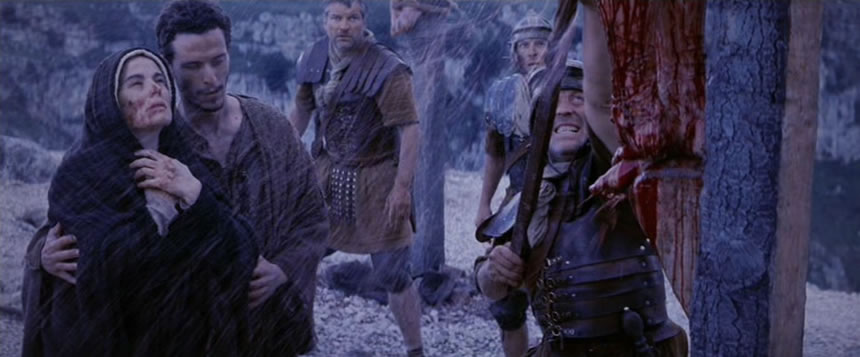
The book of Fr. Bartunek does not mention this, but I think I ought to mention it because of its connection with the Old Testament sacrifices that foreshadow Christ’s sacrifice. In the Old Testament, the High Priest would do two things on the Day of Atonement. The first is to take a goat and cast all of the sins of the faithful on it, lead it out of the gate of Jerusalem so it would die. This was so that the guilt of the people would be transfered to the victim – the goat – whose death would pay for their sins. We can, of course, see Christ as the scapegoat for all mankind in his sacrifice outside the gates of Jerusalem.
The second thing the High Priest would do is sacrifice a bull, sprinkle the blood on the people, and inside the Holy of Holies, he would also sprinkle the same blood on the Ark of the Covenant. It is symbolic of a oneness between God and man. It is said that God’s presence resided on top of the Ark referred to as the “mercy seat” for it is there that God dispensed his mercy and forgave the people’s sins. The blood brings both God and man together: they are one again – which is what atonement means (better to see it when it is spelled as at-one-ment.)
This is particularly interesting because the Ark of the Covenant is a foreshadowing of Mary. The Ark contained the manna (the bread from heaven), the ten commandments (the word of God), and the rod of Aaron (the high priest). When Jesus was in Mary’s womb, in her was the bread from heaven (John 6), the Word of God (John 1), and the high priest who would represent us all in his sacrifice.
So in the scene when Cassius, later known as St. Longinus, thrusts a spear into the side of Christ, his blood is sprinkled on Mary, the new ark of the covenent, on this perfected Day of Atonement where God and man truly become one again through Christ’s sacrifice.
The Pieta
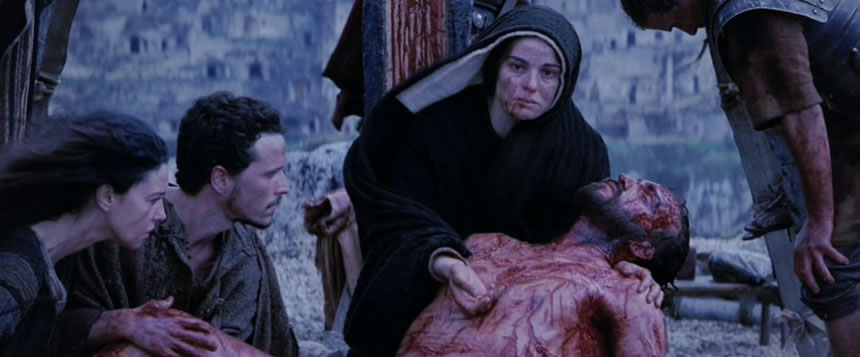
Christian art has a proliferation of the scene when Mary holds the lifeless body of Christ after it has been taken down from the cross. It is called the Pieta, most notably the sculpture of Michelangelo that can be found in Saint Peter’s Basilica in Rome.
Most Pietas will depict Mary looking at her son while holding him, but not in the film. When we see Christ’s lifeless body in front of Mary, we see her looking straight at us with one hand opened towards us. It is a gesture of reminding us that it is for us that this suffering has been for. With her opened hand, it is as if she is saying,“see, what my son has done for you.”
Originally posted on 3/23/2016
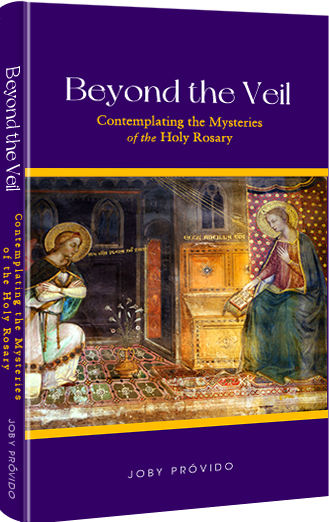
Beyond the Veil
Contemplating the Mysteries of the Holy Rosary
Prayer giants like Pope St. John Paul II, Pope Paul VI, Bl. Archbishop Fulton Sheen, and Bishop Robert Baron advocate that we contemplate on the mysteries of the rosary while we say the vocal prayers. Unfortunately, there are not many books that teach us how to do this. Beyond the Veil comes to the rescue by suggesting seven ways we can pray the rosary the way it was intended.
The larger part of the book offers mental images for each of the mysteries we can use in our contemplation, for how can we imagine the scenes in the rosary if we don't know about them?
Get your copy now either in Hardbound, Paperback, or Kindle
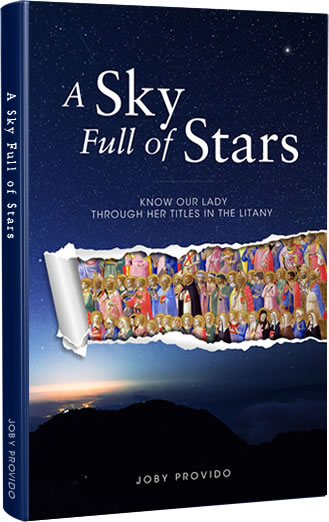
A Sky Full of Stars
Know Our Lady through her Titles in the Litany
The Church helps us understand who Mary is by honoring her with different titles in the Litany of the Blessed Virgin Mary. Unfortunately, over time and difference of culture, we might not grasp what it is the Church is ascribing to her and lose that opportinity to get to know her.
In A Sky Full of Stars, each title of the Litany is explained so we get know Mary more and fall in love with her all over again.
Get your copy now either in Hardbound, Paperback, or Kindle
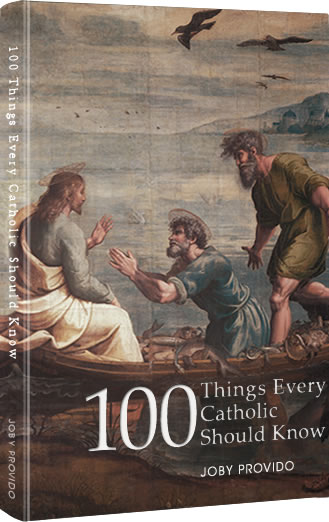
100 Things Every Catholic Should Know
Whether or not you are new to the Catholic Church, or struggling, or lapsed, or dynamically involved, this book will enlighten you with the essentials of the Faith that have been handed down to us by the apostles.
Each of the 100 topics is easy to read and distilled into bite-sized portions. Through cross-referencing, the book also shows how the topics are interrelated. Those who are new to the Faith will find this book an edifying handy reference, and those who have simply forgotten will find it a great review material that might spark a new love for God and religion.
Get your copy now either in Hardbound, Paperback, or Kindle
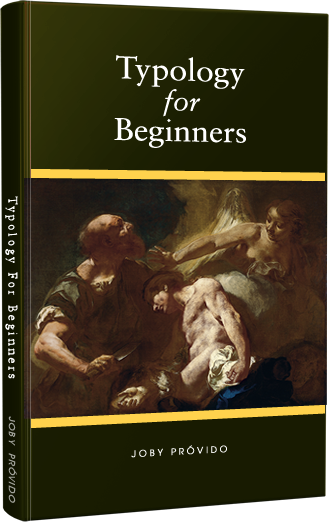
Typology for Beginners
A Catholic Perspective on understanding the New Testament through the Old Testament
First-century Jews converted to Christianity in droves because of the way the New Testament was written to show Jesus was the Messiah promised by the Old Testament. We also learn about how Mary is the New Eve and the Ark of the Covenant in the way the writers portray her.
Through typology, the patterns that connect the Old and New Testaments make the Bible stories more accessible so that one becomes excited to read Sacred Scripture again.
Get your copy now either in Hardbound, Paperback, or Kindle


